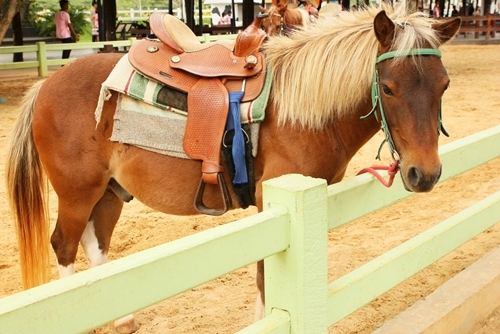There are many concerns to consider when it comes to proper horse care, but some are certainly trickier to treat than others. Hearing loss is certainly one of these ailments, and detecting signs of auditory damage in your horse can be a difficult process. However, recognizing traces of hearing loss is essential to preserving your horses’ health, and treating the condition is a way to help with everything from reducing episodes of anxiety to enhancing communication during competitions. Check out these guidelines for understanding how hearing loss in horses works as well as potential ways to find treatment:
A horse’s auditory system
Pristine hearing is essential for productive communication between a horse and its rider, especially when it comes to responding to vocal instructions or detecting any hints of potential danger. A typical sign of sufficient hearing with a horse is when its ears shift their direction toward you whenever you’re producing a sound. A horse’s auditory system is incredibly similar to that of a human’s; however, the primary difference resides in the power of its hearing. A horse’s pinna, or the outer structure of the ear, has 16 active muscles, which helps accurately capture and interpret sound waves entering the ear in a variety of directions. In comparison, humans only have three muscles in their pinna.
General causes of hearing loss
According to TheHorse.com, there are four causes of hearing loss that are most prevalent in cases involving horses. The first one is temporohyoid osteoarthropathy, which is a disease that affects the stylohyoid and petrous temporal bones, mainly found in middle-aged horses. Hearing loss is a relatively common symptom of temporohyoid osteoarthropathy. Congenital sensorineural deafness is another condition that impacts a horse’s auditory system, which is produced from mutations of protein genes within the horse. Multifocal brain disease, which arises from spinal infection, also may result in extensive hearing loss.
Detecting signs of hearing loss
While hearing loss is seldom recognized as a problem in horses, there are a few indicators that can help identify whether your horse may have experienced auditory damage. For starters, if you begin to notice that your horse isn’t reacting to your attempts at communication, hearing loss may be the reason why. Another common sign of auditory impairment is when a horse begins to act a little more high strung than normal. If you’ve noticed that your horse seems startled or frightened when you come up from behind to pet it, hearing loss may be present. If you’re beginning to suspect your horse might be suffering from auditory damage, a good test is to stand out of its peripheral vision and shake a noisy can or container. If the horse doesn’t even acknowledge the sound, it might be a good time to get it tested.
Treating auditory damage
The first thing that needs to be done if you are concerned about hearing loss in your horse should be scheduling a neurologic exam or sound test with a veterinarian. This may lead to a endoscopic exam, which is where the horse’s actual interior auditory structures are thoroughly examined. If evidence is found that any interior bones or cartilage is damaged, hearing loss can be appropriately diagnosed. However, if the auditory system appears fine, yet the horse is still showing signs of hearing loss, another condition such as infection may be present. This is why detecting hearing loss is crucial for horse care, as it may lead veterinarians to find a more severe ailment to treat.









